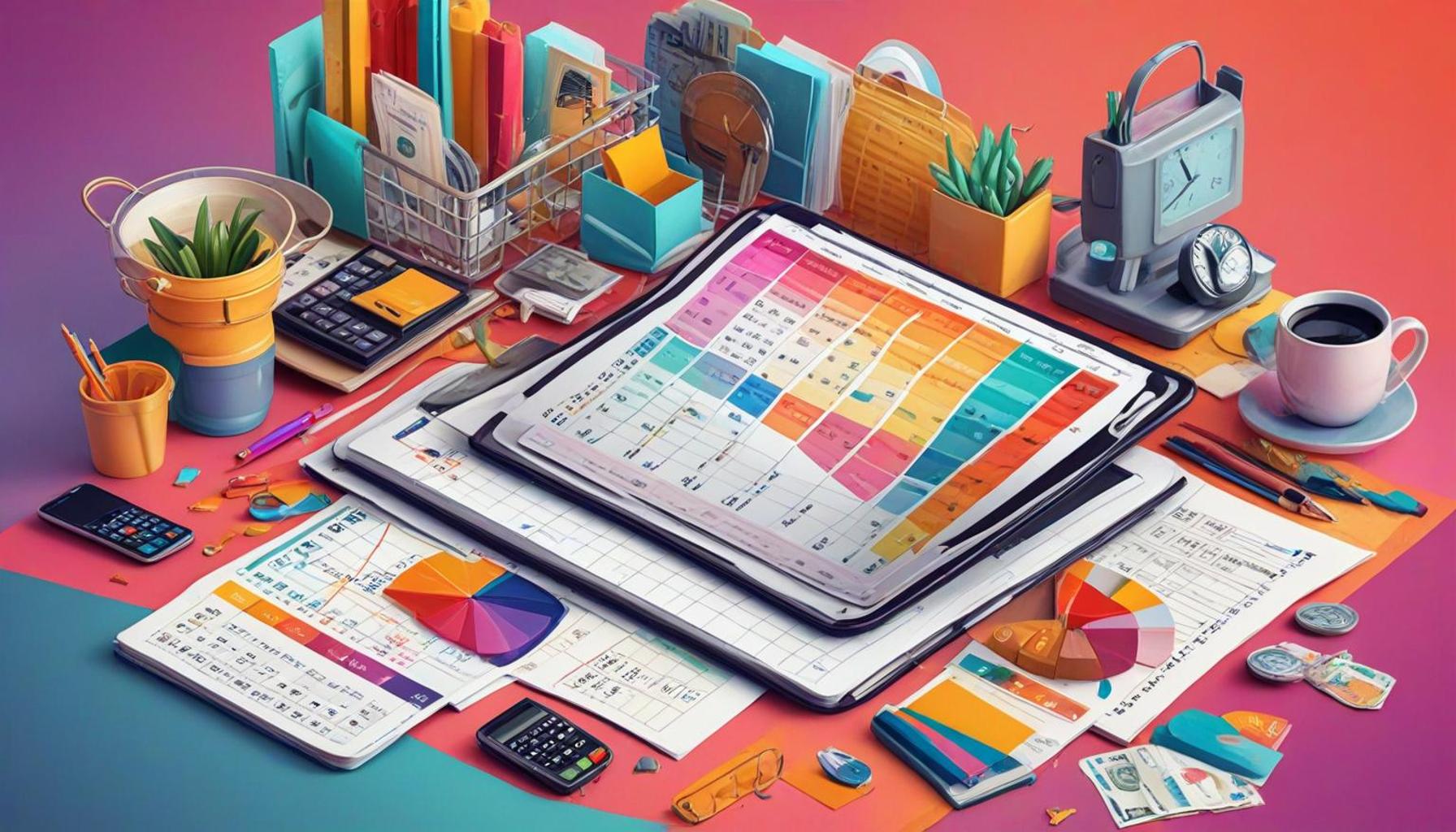How to Track and Analyze Your Daily Expenses to Improve Personal Budgeting

Understanding Daily Expenses
Effective personal budgeting hinges on the ability to understand and manage your daily expenses. By monitoring your spending meticulously, you can uncover trends that inform your financial choices. This practice is essential not just for controlling spending but also for making headway toward your savings goals and achieving long-term financial security.
Tracking daily expenses has several key benefits that can greatly enhance your financial wellbeing:
- Awareness of Spending Habits: By keeping a detailed record of your expenditures, you gain a clearer picture of your financial landscape. You might discover, for instance, that you spend a surprising amount on coffee each day. A daily $5 latte, while seemingly minor, adds up to $150 a month—enough for a nice dinner or a contribution to your savings.
- Identifying Areas of Improvement: Tracking also enables you to pinpoint wasteful spending. Perhaps you have subscriptions to streaming services that you rarely use, which can typically total $20 or more a month. By canceling these unnecessary services, you can free up funds for more meaningful expenses or savings.
- Building a Realistic Budget: Creating a budget is more effective when rooted in actual spending data. For example, if you find you typically spend $400 a month on groceries, you can create a more accurate budget rather than simply guessing based on general guidelines.
To track and analyze your expenses effectively, adopting a systematic approach is key. Begin with consistent data collection. Consider various tools to aid your tracking, including:
- Mobile Apps: Applications like Mint or YNAB (You Need A Budget) make expense tracking simple and often provide insights based on your spending patterns, making it easier to identify when you might be overspending.
- Spreadsheets: If you prefer a more hands-on approach, creating a customized budget spreadsheet using Excel or Google Sheets allows for great flexibility. You can tailor your categories to suit your lifestyle, whether it’s dining out, entertainment, or transportation.
- Pencil and Paper: For those who want to maintain a low-tech approach, jotting down expenses in a notebook can serve as a tangible reminder of your financial commitments. Writing can help reinforce your awareness and serve as a mindfulness practice in your spending habits.
Ultimately, dedicating time to evaluate your daily expenses will not only lead to more intelligent spending choices but also contribute to a more secure financial future. Understanding where your money goes empowers you to make decisions that align with your values and long-term goals. So take the first steps today toward this transformative journey—your wallet will thank you for it!
DISCOVER MORE: Click here to find out how to apply
Creating an Expense Tracking System
To start tracking your daily expenses effectively, you need to establish a reliable expense tracking system. The goal is not only to record what you spend but also to categorize those expenses in a way that provides meaningful insights into your financial behaviors. Here are some essential steps to set up an effective tracking system:
1. Determine Your Categories
The first step in tracking expenses is to create categories that reflect your spending habits. Consider breaking down your expenses into the following categories:
- Fixed Expenses: These include bills that do not vary month to month, such as rent or mortgage payments, utilities, and insurance.
- Variable Expenses: This category encompasses costs that can fluctuate, like groceries, dining out, and entertainment.
- Discretionary Spending: Here, you track non-essential items such as hobbies, clothing, and luxury items. This category often reveals opportunities for savings.
- Emergency Funds: Allocate some of your spending towards savings for unexpected expenses, which can help you avoid debt in the future.
Each category serves as a lens through which you can analyze your spending patterns and identify areas where you may be overspending.
2. Choose Your Tracking Method
Once you have your categories set, the next step is choosing a method for tracking your expenses. As mentioned earlier, you may use mobile apps, spreadsheets, or even a simple notebook. Choose a method that feels intuitive and convenient for you, as consistency is key to success.
3. Record Expenses Daily
To ensure accuracy, it’s important to record your expenses daily. This consistency helps you keep on top of your spending and makes it easier to remember small purchases that might otherwise slip your mind. Aim to set aside a few minutes each day to update your expense tracking system with any new transactions. This practice creates a routine that reinforces your financial awareness.
4. Review Your Spending Regularly
At the end of each week or month, take a moment to review your tracked expenses. Look for patterns in your spending habits, focusing on whether any categories exceed your expectations. For instance, if you consistently spend more on dining out than anticipated, you may want to consider whether it’s an area you can cut back on to redirect funds towards savings or debts.
Tracking your daily expenses is an eye-opening experience that can help you take charge of your finances. By establishing a systematic approach in tracking and categorizing your spending, you pave the way for informed budgeting decisions. Making small changes in the way you manage your finances today can lead to a brighter financial future tomorrow. Remember that the essential part of this journey is to stay consistent and reflective in your tracking efforts.
LEARN MORE: Click here for easy application tips
Leveraging Technology for Expense Tracking
In today’s digital age, utilizing technology can significantly enhance your expense tracking and budgeting efforts. Various tools and applications are designed to simplify the process, providing users with intuitive interfaces and valuable insights. Below are some effective technological solutions you can incorporate into your expense tracking system.
1. Mobile Apps
Mobile expense tracking apps, such as Mint, YNAB (You Need A Budget), and PocketGuard, allow you to track your spending on the go. These apps often offer features that categorize expenses automatically, sync your bank accounts for real-time updates, and even provide financial advice based on your spending habits. For instance, if you find that your grocery expenses have been unusually high, some apps can suggest budgeting strategies or notify you when you’re nearing your spending limit in that category.
2. Budgeting Software
If you prefer a more comprehensive approach, consider using budgeting software like Quicken or Personal Capital. These tools not only help you track expenses but also allow you to manage investments, plan savings, and analyze financial growth over time. They often include reporting features that visually represent your spending trends, helping you quickly identify areas needing attention. For example, a pie chart may unveil that close to 30% of your budget is spent on entertainment, prompting you to reassess your discretionary spending.
3. Spreadsheets
For those who enjoy a hands-on approach, creating a custom spreadsheet in software like Microsoft Excel or Google Sheets can be an excellent option. You can set up formulas to calculate totals, categorize expenses based on your personal needs, and create visual graphs for analysis. This method allows for maximum flexibility, as you can tailor your tracking system precisely to your specifications. For instance, you can devise a simple formula to track your monthly savings rate or set goals that you can monitor throughout the month.
4. Receipts and Electronic Records
Another practical approach to tracking expenses is to keep digital or physical receipts. Tools such as Expensify allow you to take pictures of your receipts and categorize them automatically. Maintaining a record of your receipts can be particularly useful for understanding necessary expenses versus discretionary spending. For instance, keeping all receipts for a month might reveal that you frequently purchase coffee out rather than brewing it at home, potentially highlighting an area for cost-cutting.
5. Setting Up Alerts and Notifications
Many banking and budgeting applications have options for setting alerts. You can set reminders for bill payments, notifications when you’re approaching your budget limits, or alerts when unusual transactions occur. For example, if your utility bill spikes unexpectedly, a notification can prompt you to investigate and possibly adjust your consumption habits. These alerts keep you engaged with your finances and can prevent overspending by promoting awareness.
Incorporating technology into your expense tracking routine not only enhances efficiency but also allows for a deeper understanding of your financial landscape. By exploring various tools available, you can choose which methods best suit your lifestyle and preferences, ultimately leading to more informed budgeting decisions. As you grow more comfortable with these tools, remember that consistent analysis is the key to making meaningful improvements to your financial health.
LEARN MORE: Click here to get started with your application
Conclusion
Successfully managing your finances begins with tracking and analyzing your daily expenses. By understanding where your money is going, you can make informed decisions that lead to a more balanced budget and improved financial health. As discussed, leveraging technology through mobile apps, budgeting software, spreadsheets, and receipt tracking tools can simplify your tracking process while providing valuable insights into your spending behavior.
It is crucial to adopt a consistent approach to analyze your expenses regularly. This could involve reviewing your budgeting reports weekly or monthly to identify trends and make adjustments as needed. Always ask yourself questions like, “Are my spending habits aligned with my financial goals?” and “Where can I cut back without sacrificing my lifestyle?” These reflections can spark necessary changes that contribute to your long-term financial stability.
Moreover, setting up alerts and notifications plays an essential role in maintaining awareness of your financial situation. By keeping a close eye on your spending limits and upcoming bills, you can prevent unwanted surprises that may derail your budgeting efforts.
Ultimately, improving personal budgeting is a journey. It requires patience, discipline, and a willingness to adapt. As you continue to refine your tracking methods and analysis techniques, you will gain greater control over your finances. Remember, every small change can lead to significant progress over time. Start today, and empower yourself to build a secure financial future.


